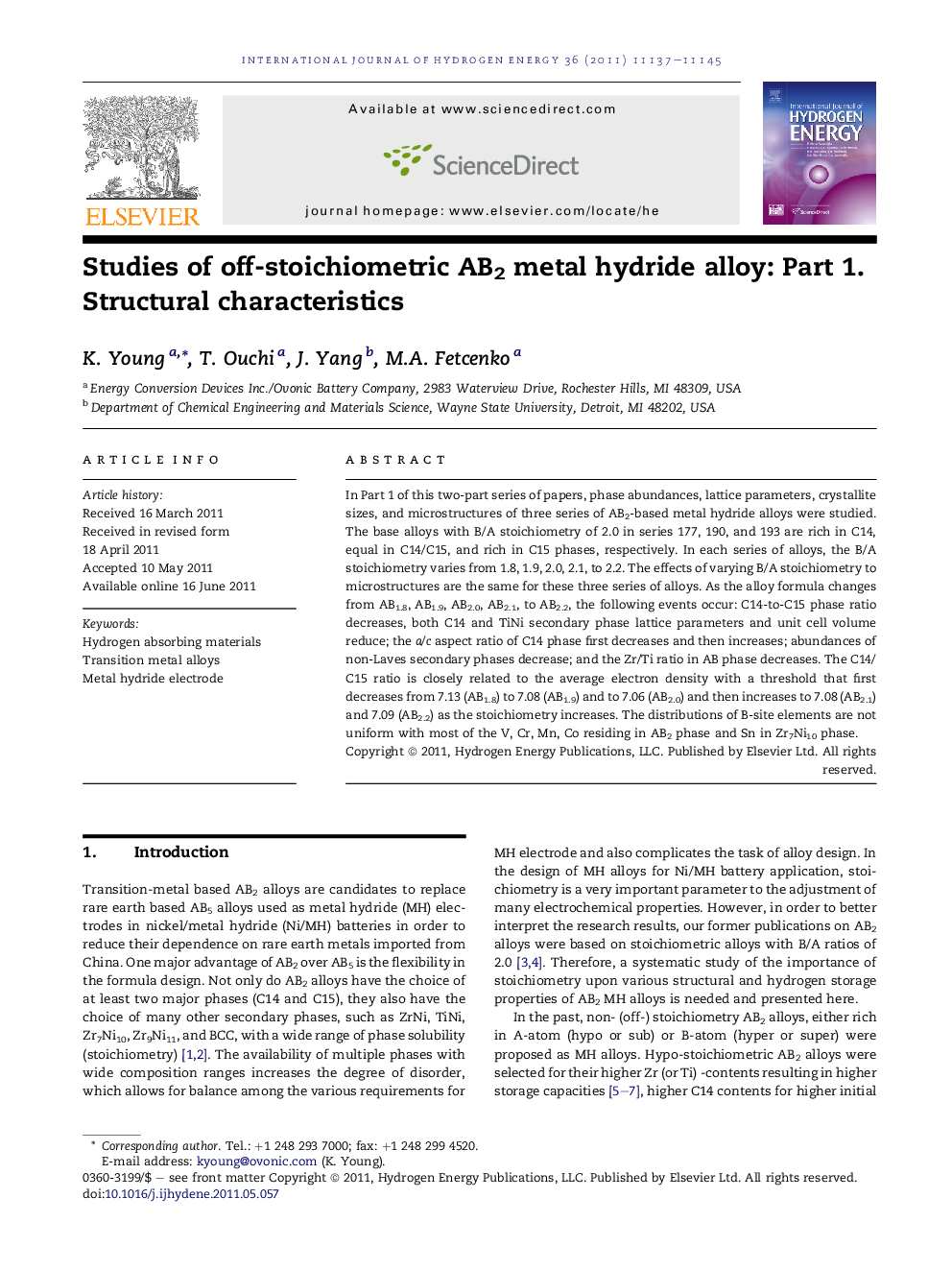| Article ID | Journal | Published Year | Pages | File Type |
|---|---|---|---|---|
| 1277586 | International Journal of Hydrogen Energy | 2011 | 9 Pages |
In Part 1 of this two-part series of papers, phase abundances, lattice parameters, crystallite sizes, and microstructures of three series of AB2-based metal hydride alloys were studied. The base alloys with B/A stoichiometry of 2.0 in series 177, 190, and 193 are rich in C14, equal in C14/C15, and rich in C15 phases, respectively. In each series of alloys, the B/A stoichiometry varies from 1.8, 1.9, 2.0, 2.1, to 2.2. The effects of varying B/A stoichiometry to microstructures are the same for these three series of alloys. As the alloy formula changes from AB1.8, AB1.9, AB2.0, AB2.1, to AB2.2, the following events occur: C14-to-C15 phase ratio decreases, both C14 and TiNi secondary phase lattice parameters and unit cell volume reduce; the a/c aspect ratio of C14 phase first decreases and then increases; abundances of non-Laves secondary phases decrease; and the Zr/Ti ratio in AB phase decreases. The C14/C15 ratio is closely related to the average electron density with a threshold that first decreases from 7.13 (AB1.8) to 7.08 (AB1.9) and to 7.06 (AB2.0) and then increases to 7.08 (AB2.1) and 7.09 (AB2.2) as the stoichiometry increases. The distributions of B-site elements are not uniform with most of the V, Cr, Mn, Co residing in AB2 phase and Sn in Zr7Ni10 phase.
► The structural properties of off-stoichiometric AB2-based metal hydride alloys were studied. ► As the B/A increases, both C14 and TiNi secondary phase lattice parameters decrease. ► As the B/A increases, abundance of non-Laves secondary phases decreases. ► As the B/A increases, Zr/Ti ratio in AB phase decreases.
